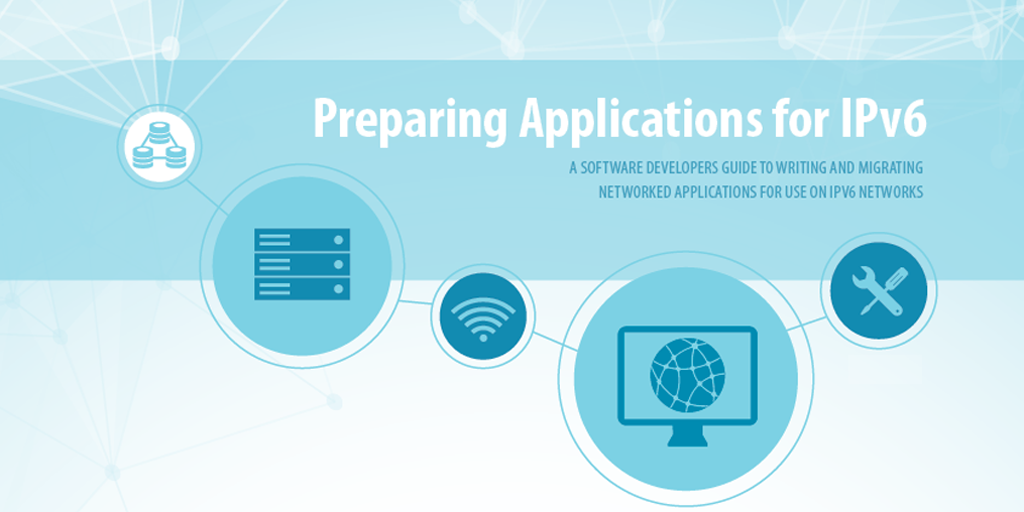
Get your apps ready for IPv6 [Archived]
OUT OF DATE?
Here in the Vault, information is published in its final form and then not changed or updated. As a result, some content, specifically links to other pages and other references, may be out-of-date or no longer available.
With IPv4 depletion at critical levels, the pressure to transition to IPv6 has never been higher. For years, network engineers and planners have been upgrading routers and configuring networks to prepare for the new protocol, but many remain unsure whether or not their custom-built applications and commercial-off-the-shelf software packages are IPv6-ready. Applications are a crucial component of any organization’s network health, but can still be overlooked when preparing a large network for IPv6 adoption. With that in mind, ARIN proudly presents “Preparing Applications for IPv6,” a software developers guide to writing and migrating networked applications for use on IPv6 networks. This guide focuses on software application needs when making the migration to IPv6, and covers some common assumptions made when developing software for an IPv4-only Internet.
Custom application developers will find this guide useful as a checklist of areas to investigate in your software’s code. You know your codebase better than anybody else, so we encourage you to take a look at each section of this guide and determine if it applies to your software. If your software acts as a Representational State Transfer (REST) client, you should be aware of the issues involved with placing IPv6 addresses in URLs. If your software takes IP address information from user, you will need to look at input validation and forms. This guide should spare you hours of exploratory testing, allowing you to fix the code you know will break before entering into an expensive QA cycle.
If you are the user of custom or off-the-shelf software, you can use this guide as a roadmap covering potential issues that software may encounter with an IPv6 deployment. For example, if your software stores IP addresses in a database, you may wish to ask your software vendor if the database is capable of storing IPv6 addresses as well as IPv4 addresses. You may also wish to forward this guide to your software vendor for their use in determining if the software they have created is suitable for the coming IPv6 world.
The overwhelming majority of the books available on IPv6 migration are aimed at helping network engineers migrate their network infrastructure to IPv6. With the lack of IPv6 transition information for software developers, we feel a guide with a software focus was long overdue. This guide is geared specifically toward software architects, software developers, software engineers, and computer programmers. We hope it will help you gain a more thorough understanding of the changes needed for your software to make a smooth transition to IPv6, and arm you with the knowledge you need to confront software vendors about their preparedness for IPv6.
If you have any questions after reading this guide, just contact us at [email protected].
OUT OF DATE?
Here in the Vault, information is published in its final form and then not changed or updated. As a result, some content, specifically links to other pages and other references, may be out-of-date or no longer available.
